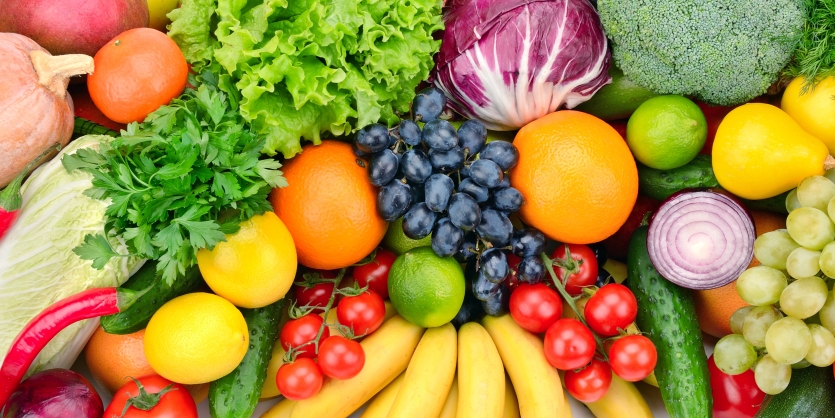Use Antioxidants to Protect Yourself from Free Radical Damage

Your body is made up of so many different types of molecules. They all play their roles. But antioxidants stand out. Antioxidants are molecules that neutralize free radicals. Left alone, free radicals can cause damage to cell membranes, DNA, and more. This damage can lead to mutations, impaired function, and even cell death. To minimize potential damage from free radicals, your body utilizes a defense system of antioxidants.
Where Do Free Radicals Come From?
It is impossible to completely avoid damage from free radicals. They arise from sources inside (endogenous) and outside (exogenous) your body. Oxidants that develop from processes within your body form as a result of normal breathing, metabolism, and inflammation.
Exogenous free radicals form from environmental factors like pollution, sunlight, strenuous exercise, smoking, and alcohol. Unfortunately, no antioxidant system is perfect. So, cells and DNA damaged by oxidation accumulate as you age. A healthy diet and lifestyle can help minimize this damage.
How Antioxidants Protect You
Antioxidants are unique molecules. Their chemical structure allows them to do their main job—neutralizing free radicals. Antioxidants are molecules that can give or take an electron. That’s important because free radicals have unpaired electrons that make them very reactive.
Electrons want to be in pairs. If they aren’t, these molecules with unpaired electrons try their hardest to solve that problem. That’s what can lead to reactions that cause the oxidative damage talked about above.
Antioxidants don’t mind helping out free radicals by donating or taking on an electron. With all the electrons paired up, these free radicals are neutralized and can be safely eliminated from the body.
Sources of Antioxidants
Some antioxidants can be created by your body, and others must come from your diet. Glutathione, superoxide dismutase (SOD), and catalase are all created by your body to help defend itself. Key nutrients have been shown to increase the production of these important antioxidants.
Micronutrient (vitamin/mineral) antioxidants include vitamin E, beta-carotene, vitamin C, and selenium. The body cannot manufacture these micronutrients, so they must be acquired by diet. In addition, there are many plant-derived nutrients (phytonutrients) that can act as powerful antioxidants in the human body. The following list is an example of the wide variety of phytonutrient antioxidants present in a healthy diet:
| Phytochemical | Food source |
| Allyl Sulfides | Onions, garlic, leeks, chives |
| Carotenoids (e.g. lycopene, lutein, zeaxanthin) | Tomatoes, carrots, watermelon, kale, spinach |
| Curcumin | Turmeric |
| Flavonoids (e.g. anthocyanadins, resveratrol, quercitin, catechins) | Grapes, blueberries, strawberries, cherries, apples, grapefruit, cranberries, raspberries, blackberries |
| Glutathione | Green leafy vegetables |
| Indoles | Broccoli, cauliflower, cabbage, Brussels sprouts, bok choy |
| Isoflavones | Legumes (peas, soybeans) |
| Isothiocyanates (e.g. sulforaphane) | Broccoli, cauliflower, cabbage, Brussels sprouts, bok choy |
| Lignans | Seeds (flax seeds, sunflower seeds) |
| Monoterpenes | Citrus fruit peels, cherries, nuts |
| Phytic Acid | Whole grains, legumes |
| Phenols, polyphenols, phenolic compounds (e.g. ellagic acid, ferrulic acid, tannins) | Grapes, blueberries, strawberries, cherries, grapefruit, cranberries, raspberries, blackberries, tea |
| Saponins | Beans, legumes |
The recommendation from the National Cancer Institute, the United States Department of Agriculture (USDA), and nutrition experts is to eat a minimum of 5-13 servings of fruits and vegetables per day depending on your individual caloric needs. Based on these recommendations, a typical varied diet would provide approximately 200-600 mg of vitamin C and 10-20 mg (16,000-32,000 IU) of carotenoids. Additionally, polyphenols—the most abundant antioxidant in the diet—could have a daily dietary intake as high as 1 gram per day in a mixed, varied diet of fruits, vegetables, grains, and beverages.
Possible intakes of other phytonutrient antioxidants could include:
- Anthocyandins: 1,500 mg in two ounces of black grapes
- Proanthocyanidins: 100-300 mg per day from red wine
- Catechins: 50 mg per day from tea (one cup brewed green tea – 240-320 mg catechins), chocolate, apples, pears, grapes, red wine
- Isoflavones: 50 mg per day from soy foods
- Chlorogenic acid: as high as 800 mg per day in coffee drinkers.
Are You Eating Enough Antioxidants?
It may seem reasonable that a consistently healthy and varied diet could provide high doses of antioxidants. But the average American gets a total of just three servings of fruits and vegetables each day. As previously mentioned, dietary guidelines call for five to thirteen servings.
Due to this low intake, 93 percent of Americans fail to get even the Estimated Average Requirement (EAR) for vitamin E. More than half of adults fail to get even the EAR for vitamin A. Intake of numerous other antioxidants are sure to be well under optimal and beneficial levels.
Eating enough fruits and vegetables is the best way to make sure that you are getting enough antioxidants in your diet. Evaluate your diet, and make sure that you get at least five servings per day. Additionally, a good multivitamin can increase your intake of antioxidant vitamins and minerals, and may include some antioxidant plant compounds.
References
What We Eat In America, NHANES 2001-2002. United States Department of Agriculture. 2005
*These statements have not been evaluated by the Food & Drug Administration. This product is not intended to diagnose, treat, cure, or prevent any disease.




